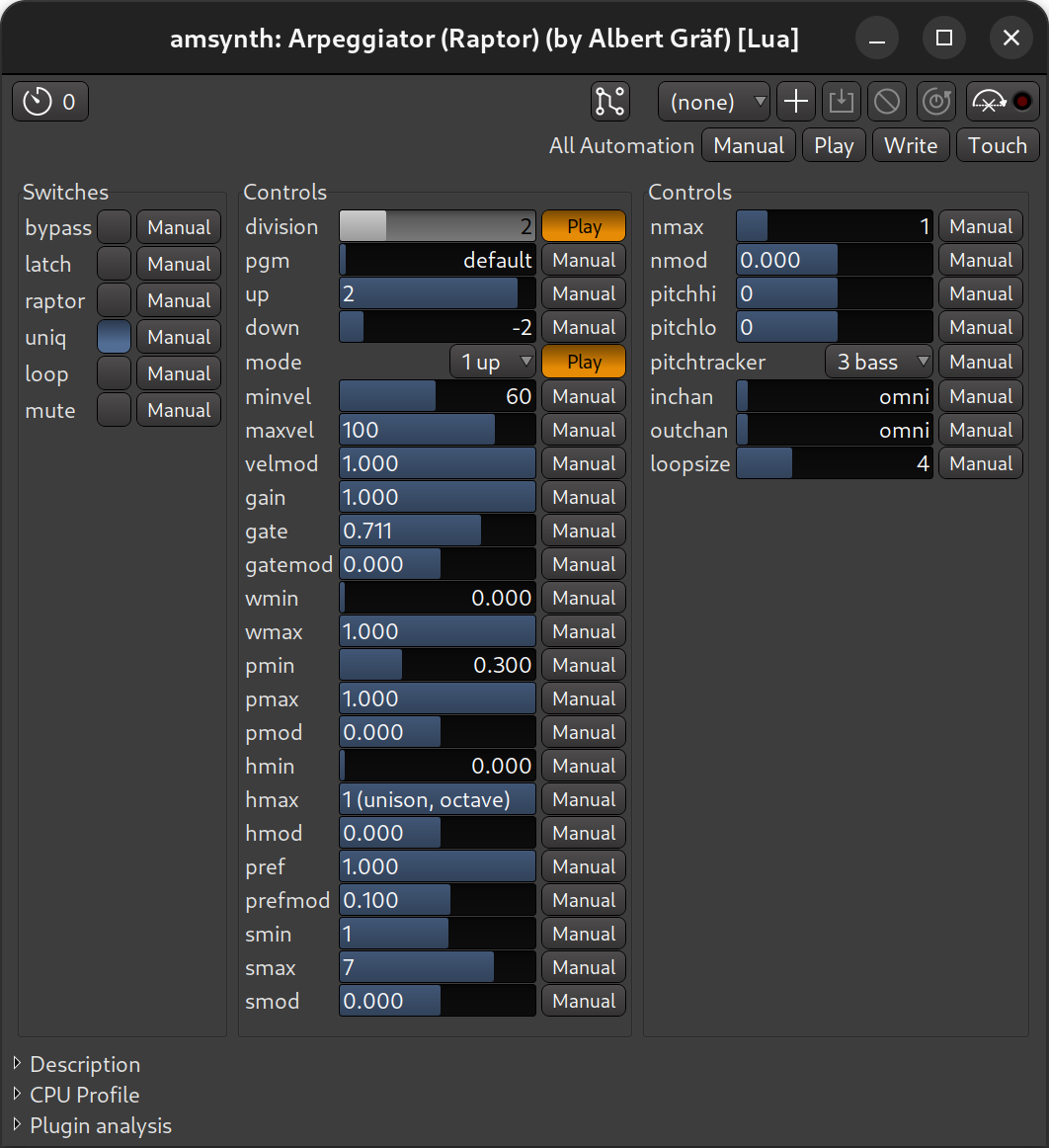Utilities
ACE Amplifier
This plugin can adjust gain by +/- 20dB anywhere in the processor box. It's typically useful in scenarios where a plugin's output needs to be adjusted, but the plugin does not provide its output level control.
Gain is the only available setting. It can be set in the generic plugin editor dialog or adjusted on the respective automation lane.
ACE A/B Switch and ACE Cross Fade
These two plugins are very similar and allow switching between two plugins earlier in the processing chain using an automation lane and custom pin connections.
In the example below, the processor box for a 1-channel track has two ACE Delay plugins processing the input differently. Each plugin has one manually added output so that the original signal would flow into one instance of a plugin while bypassing the other one. All two resulting outputs then flow into the ACE A/B Switch plugin. Input 1 is considered the A version, input 2 is the B version.
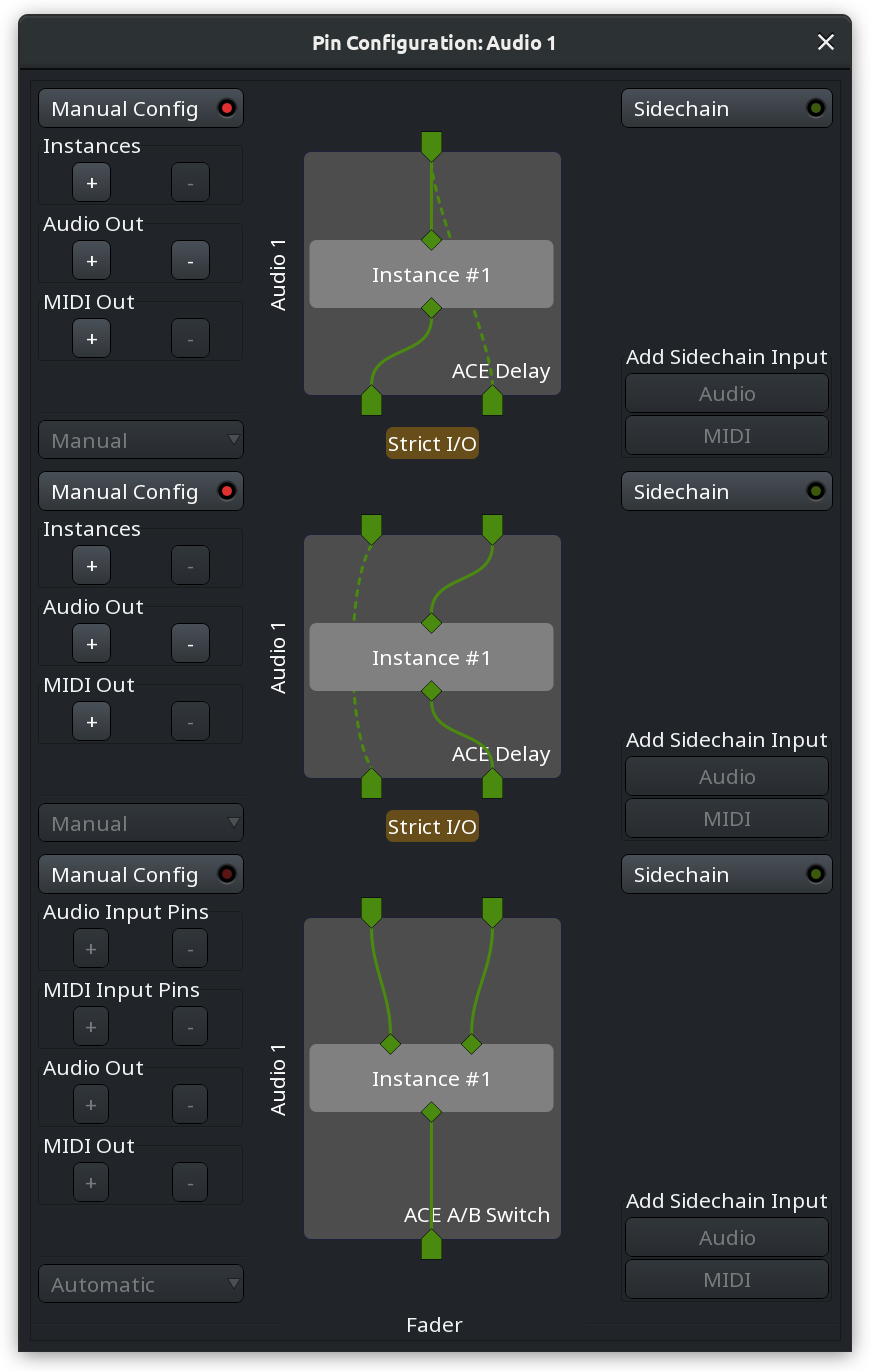
Both ACE A/B Switch and ACE Cross Fade will default to the A version. Using an automation lane, it's switch to the B version and back. This is where the difference between the two plugins comes into play.
With ACE A/B Switch, the switch is instant, it's either A or B:

With ACE Cross Fade, however, it's possible to gradually transition to the B version and then back, mixing A and B signal in different ratios.

The plugins support 1-, 2-, and 4-channel configurations:
- Mono out: In 1/2 -> Out 1
- Stereo out: In 1/3 -> Out 1, In 2/4 -> Out 2
- Quad out: In 1/5 -> Out 1, In 2/6 -> Out 2, In 3/7 -> Out 3, In 4/8 -> Out 4
ACE Mute
This plugin can mute the signal anywhere in the processing chain as opposed to automating the mute state of the track that works on all processed audio only. Using ACE Mute in the very beginning of the signal chain means that in the muted state no signal is processed by plugins further in the processing chain.
ACE Mute has no settings. All user interaction happens in the dedicated automation lane:

Ardour also ships with a variation of ACE Mute called ACE Slow Mute that applies a 1 second long fade out/in before/after the muting.
Voice/Level Activate
This plugin rolls the transport when the signal level on the plugin's input exceeds a user-defined level. A common scenario where this is helpful is recording in a home studio where an instrument or a vocal mic is at a distance from the computer. Arming a track for recording, toggling recording mode, then clapping in front of a mic or plucking a string will roll the transport and start recording to a track of choice.

The only configurable setting is the input level threshold.
MIDI Note Mapper
Maps arbitrary MIDI notes to others. This affects both note-on and note-off events, as well as polyphonic key pressure. A single note can be mapped twice, but only the last mapping is used.
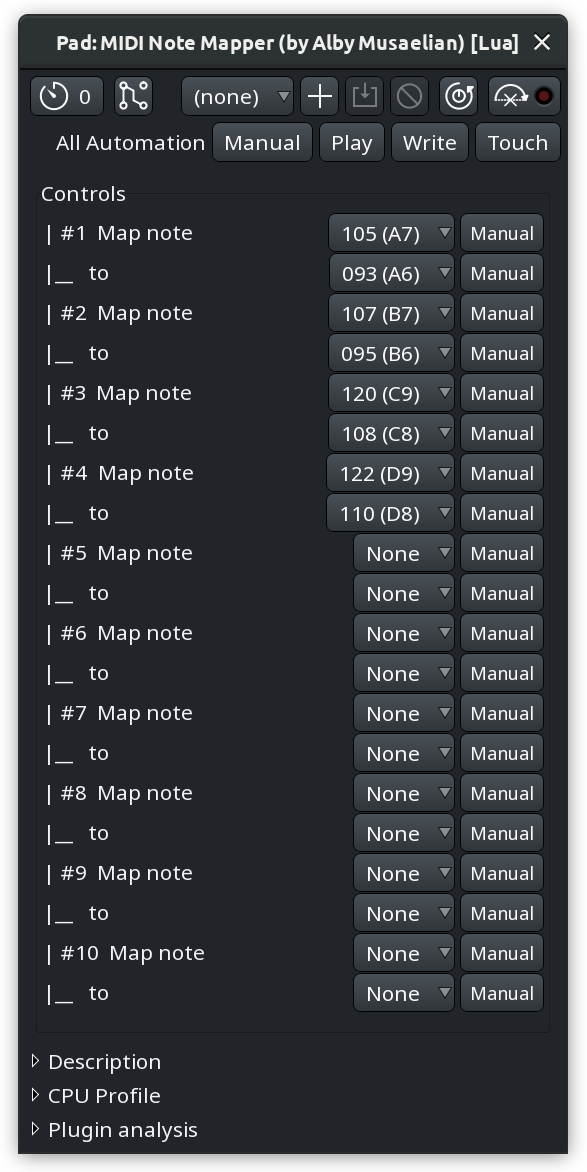
Arpeggiators
Arpeggiators commonly take a chord and play it note by note in a certain pattern: up (from the lowest note to the highest note), down (from the highest note to the lowest one), up and down, down and up, or in a random fashion.
They also have a number of additional settings like division that defines the rate at which an arpeggiator will repeat the pattern. Or the number of octaves the arpeggiator will jump between while transposing a repeating note.
All three arpeggiators shipped with Ardour — simple arpeggiator, Barlow arpeggiator, and Raptor arpeggiator — share these basic settings. However, some of their design specifics vary.
The simple arpeggiator allows setting different velocities for notes at the bar line, beat line, and subdivisions. It also has a swing setting.
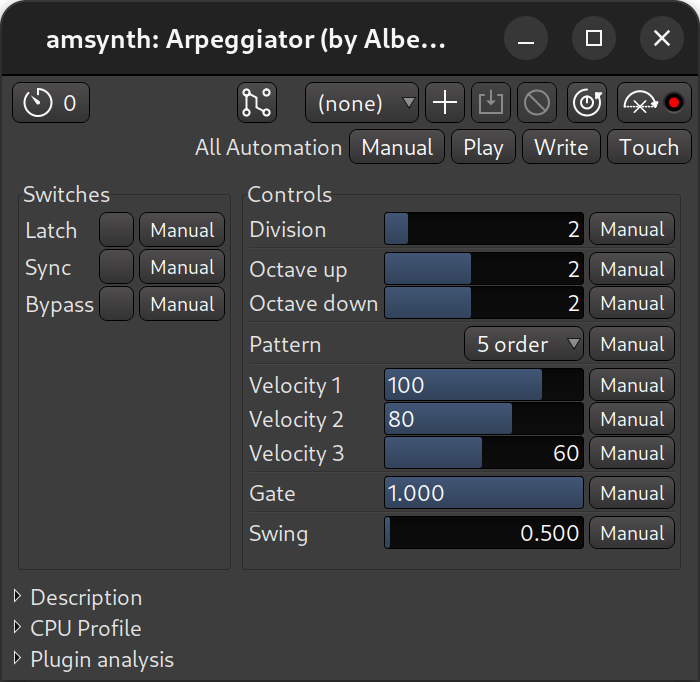
The Barlow arpeggiator has sample-accurate triggering and automatically adjusts to the current time signature. It also allows setting min and max velocity.
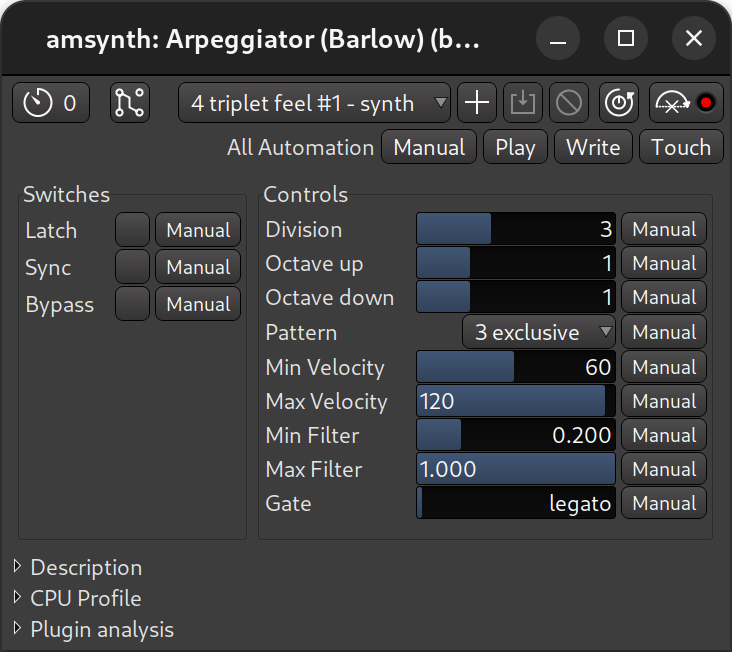
The Raptor arpeggiator has harmonic controls, input pitch and velocity tracking, and a few other features.
